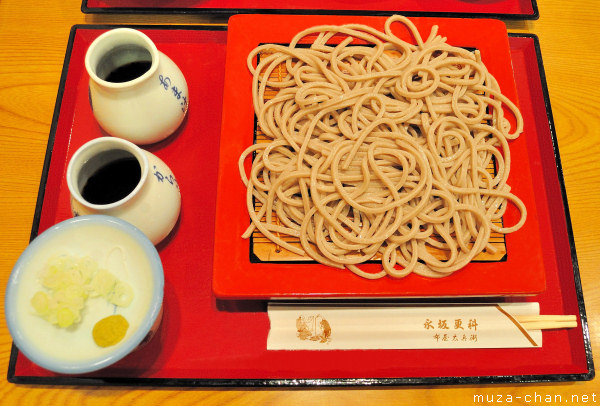Soba, a type of noodle made from buckwheat flour, is one of the most popular dishes in Japan, with a tradition of over 300 years. Originally, soba was prepared in Buddhist monasteries, but it quickly became popular in Edo and that was a very good thing because the buckwheat flour, unlike the rice, has a high content of thiamine (vitamin B1). So, by eating soba, the Japanese people were able to avoid a very dangerous disease caused by thiamine deficiency, Beriberi.
In time, the Japanese cooks developed a wide variety of soba recipes, categorized by the type of flour used: 100% buckwheat, 80% buckwheat plus 20% wheat flour, or more sophisticated versions with traditional Japanese green tea (matcha) or powdered cherry blossoms added to the mix of flour. Soba can also be categorized by how it is served, hot or cold, and by the ingredients used, like eggs, nori seaweeds, spring onions, shiitake mushrooms, fried tofu cheese or tempura. Actually, you can add almost anything to soba.
My favorite? That would be the kikouchi soba, a type made only from buckwheat flour, served cold, with two types of dipping sauce (soba tsuyu) and with a tsukemono (Japanese pickles) garnish:
EXIF Info:
|
Yesterday’s Japan Photo:A Japanese company with an unlikely name, Andersen |



